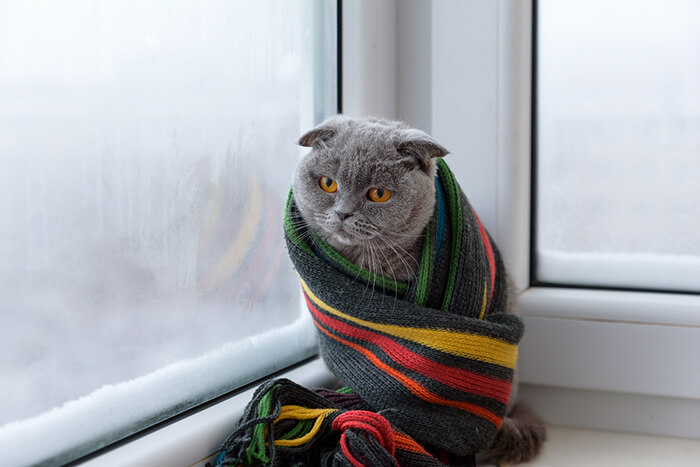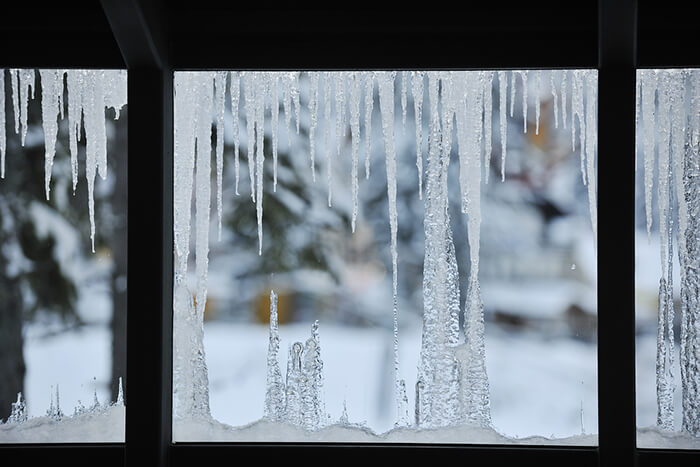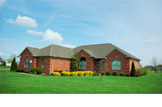
Finding ice buildup on the inside of your home’s windows during the frigid winter months is probably a little unnerving. Whether you have an old or new home, this is a tell-tale sign that you’re spending more on your energy bills than you should.
Now, before you lose sleep worrying or try to get a second job to pay for your high heating bills, you should consider yourself lucky. Even though it may seem contradictory to consider ice on your windows even remotely lucky, you now know that your home has a problem, and you can take steps to correct it.
Step 1 – Energy Audit

You’ve probably heard of some of the conditions that may cause your home to waste energy like leaky windows or insufficient insulation, but where do you start when you want to stop window ice buildup or reduce your heating bill?
Start with a Home Comfort and Energy Evaluation from Manitoba Hydro, take a Home Online Energy Efficiency Assessment through SaskPower, or visit your local hydro website to find the best energy audit options.
Each service evaluates your home’s annual energy use history to help you understand where you’re spending your money, and then makes recommendations on how you can increase energy efficiency and save.
Complete the assessment online and receive a customized report identifying specific efficiency upgrades that could save you money.
Get tips and rebate information available to save with:
- HVAC systems
- Lighting
- Insulation
- Water heating
- Windows and doors
- Thermostats
- Geothermal heat pump systems
- Solar energy
- Appliances and electronics
If you’re anxious to obtain the maximum efficiency, you can hire a professional energy rater to evaluate your property. For a fee, you’ll receive a detailed report that identifies every way your home is wasting energy along with a plan for how to correct the issues.
By following these recommendations, you’ll not only save money on your hydro bills, you’ll also be reducing greenhouse gases and your carbon footprint.
Step 2 – Address Immediate Problems

Even if you don’t want to spend money for a professional energy audit, you don’t have to be an expert sleuth to figure out the areas in your home that need attention. Cold winter weather can actually provide some obvious clues on what you need to fix first.
Look for spots that are uncomfortable or causing unusual conditions like:
- Drafty areas — You’ll probably notice the curtains slightly moving or cold spot when you sit in your favourite chair by the window. Air leaks account for 10-percent of an average heating bill. To clearly locate and remedy problem areas, purchase or rent an infrared thermometer. Just point the gun toward windows, doors or other drafty spots (check around recessed ceiling lights too) to pinpoint air leaks. Seal with caulking, insulation or weatherstripping to stop air leaks fast.
- Condensation or ice buildup on windows — When outside temperatures drop, water vapour from the inside warm air will turn to liquid, condense and then form into ice on your windows. Prolonged exposure to ice can cause damage to the window and promote mold growth. Reduce excess moisture in the air by running a dehumidifier, repair plumbing leaks, and increase ventilation when cooking, showering and running your clothes dryer. You can also replace single-pane windows with double- or triple-pane or add insulating Low-E glass to lower condensation buildup.
- Soot or dust buildup on furniture — When it seems like you just dusted but you keep noticing a buildup on your furniture, it’s time for some action. First, you’ll want to replace your furnace filter. It may be tempting to buy an inexpensive one, but it won’t help reduce soot and dust particles from escaping into the air. Consider a high-efficiency HEPA filter for improved air quality.You’ll also want to schedule an HVAC check and tune-up for your heating system. This will help identify problem areas like worn parts or more serious carbon monoxide leaks. With heating using up to 43-percent of your overall energy costs, keeping your furnace or boiler operating at top performance will save you money all season long.
- Insulation — After years of settling, much of your insulation has become ineffective at sealing in heat and sealing out winter cold. Increase your attic, crawl space or basement insulation to see a dramatic reduction in energy waste.
Step 3 – Upgrade Appliances, Windows and Doors

It’s difficult to understand how spending money can help you save money, but when it comes to home appliances, new technologies and built-in efficiencies will provide a quick return on investment.
- Install a programmable thermostat — By automatically regulating your home’s temperature when you’re away or sleeping, you can save up to 10-percent per year.
- Change to an energy-efficient tank or tankless water heater—About 12-percent of your utility bill is used for heating water. Newer technologies provide hot water for a fraction of the cost of older units and tankless units only heat water on demand. To save even more, turn the thermostat down, add blanket insulation to your water heater to keep water hot longer, and consider using less hot water (wash and rinse clothing on the cold setting.)
- Replace old light fixtures and bulbs — It may not seem possible, but energy use can be reduced by 50-percent to 75-percent by installing old lighting with Energy Star fixtures. LED bulbs last longer than incandescent and fluorescent lighting and produce little heat (saving on summer cooling bills.)
- Upgrade household appliances — Older model refrigerators, clothes washers and dryers are all energy hogs. Energy Star certified appliances have built-in efficiencies to help control energy use and water consumption.
- Windows and doors — Replacing your old, leaky windows and doors will provide an immediate savings in your heating bills, eliminate condensation and ice buildup and provide a huge return on investment when you’re ready to sell your home. Today’s options include improved framing materials, energy-efficient glass coatings and gases, plus a variety of air-tight styles that will keep your home warm and comfortable all winter long.
Conclusion
You’re not alone—Winter can be a challenge for Canadian homeowners trying to maintain a budget. Luckily, ice buildup on the inside of your windows prompted you to look a little deeper to find the cause of the problem and to seek ways to save money on your energy bills.
Now that you know what steps to take like doing a home energy audit, addressing immediate problems, and upgrading your appliances, windows and doors, you’re well-equipped to make the best choices for your home.
You work hard for your money; make sure to save some of it and have a little fun this winter.





Comments are closed.